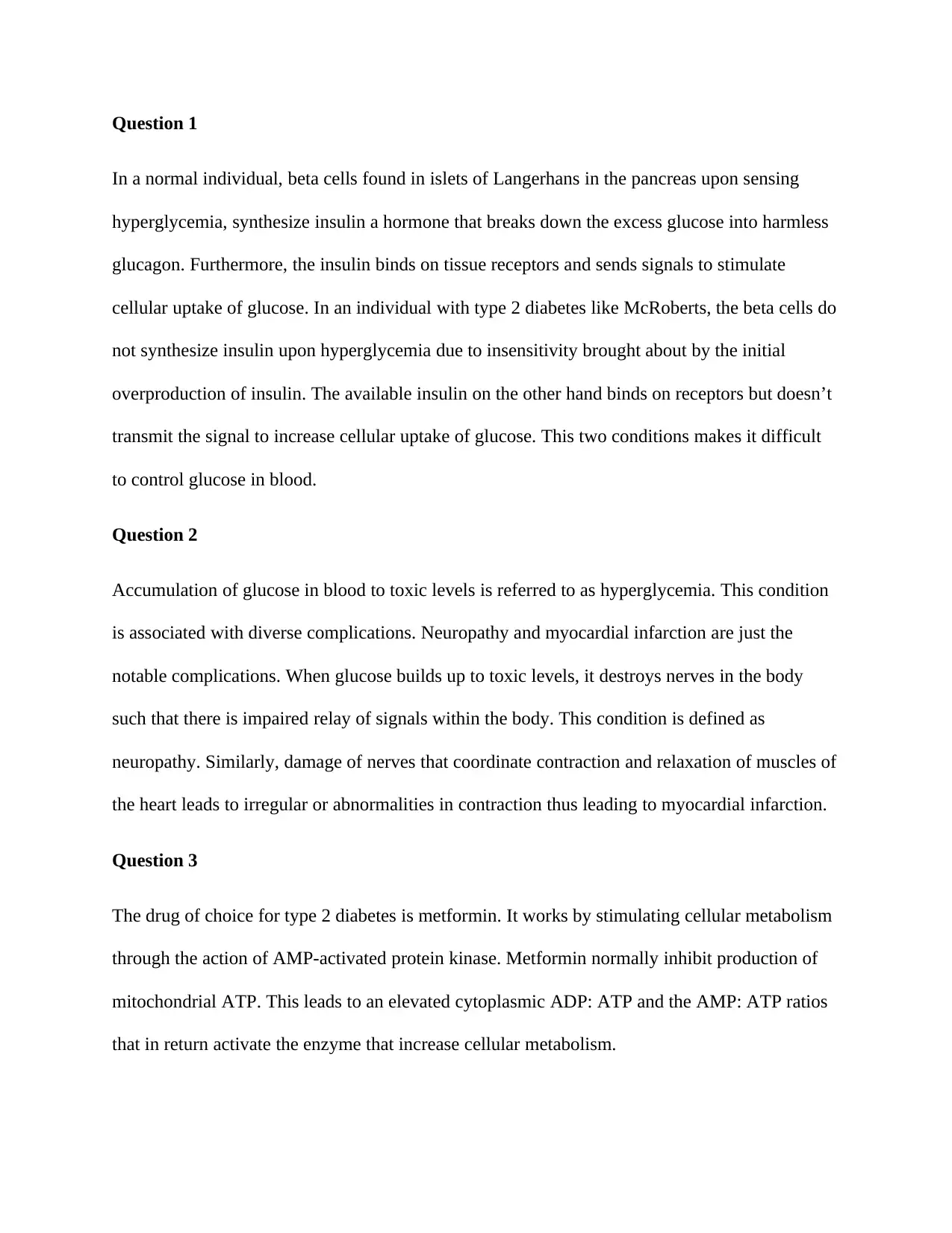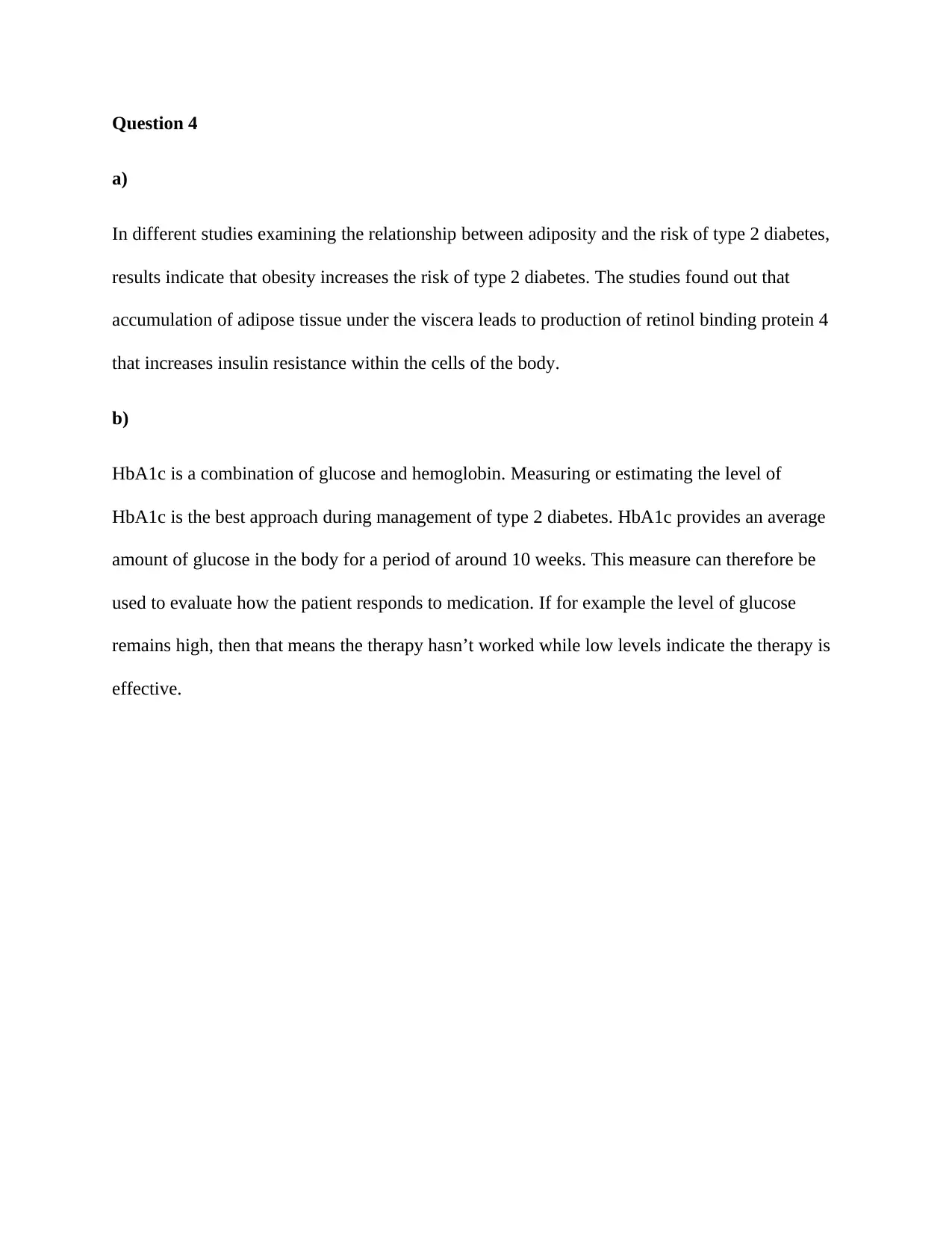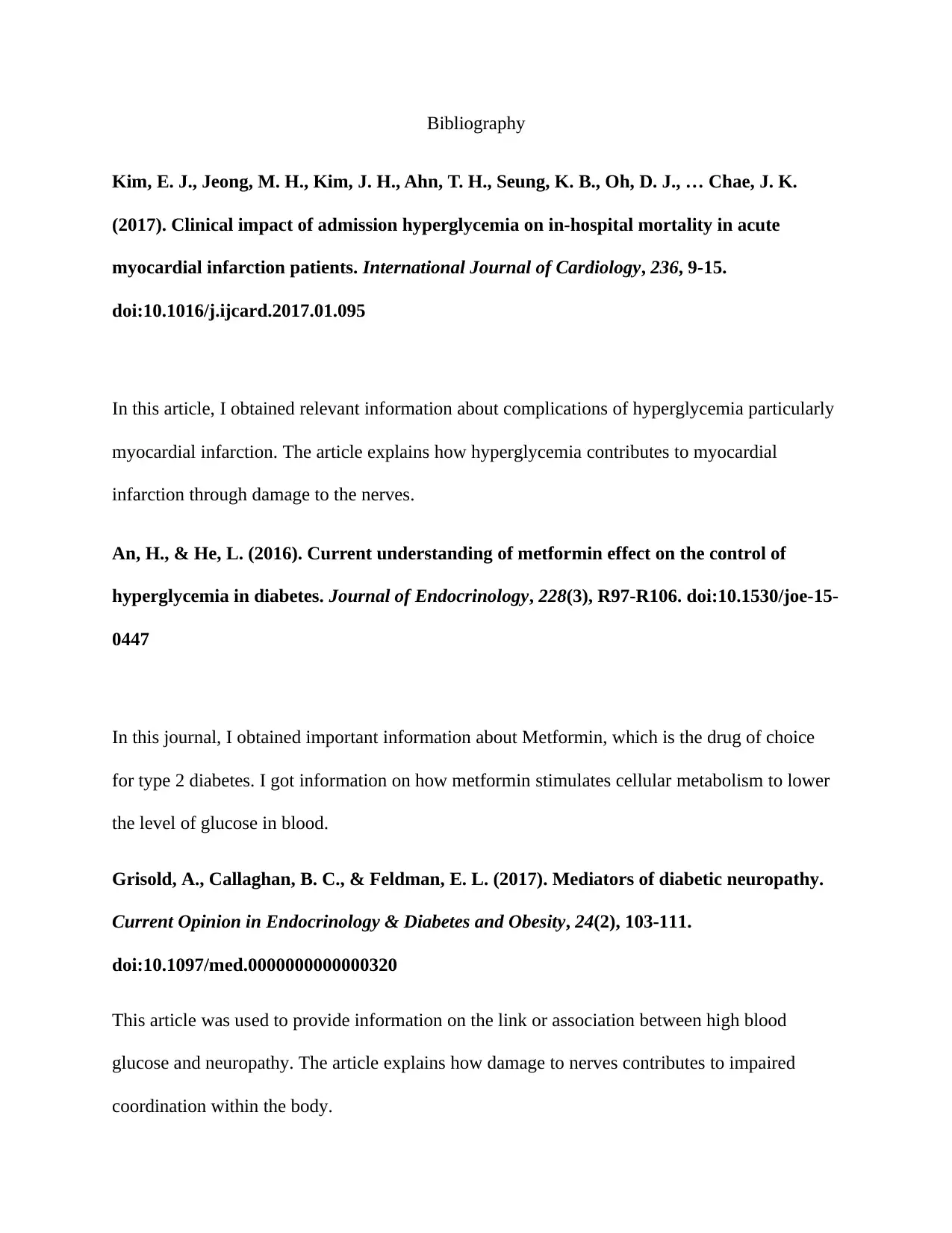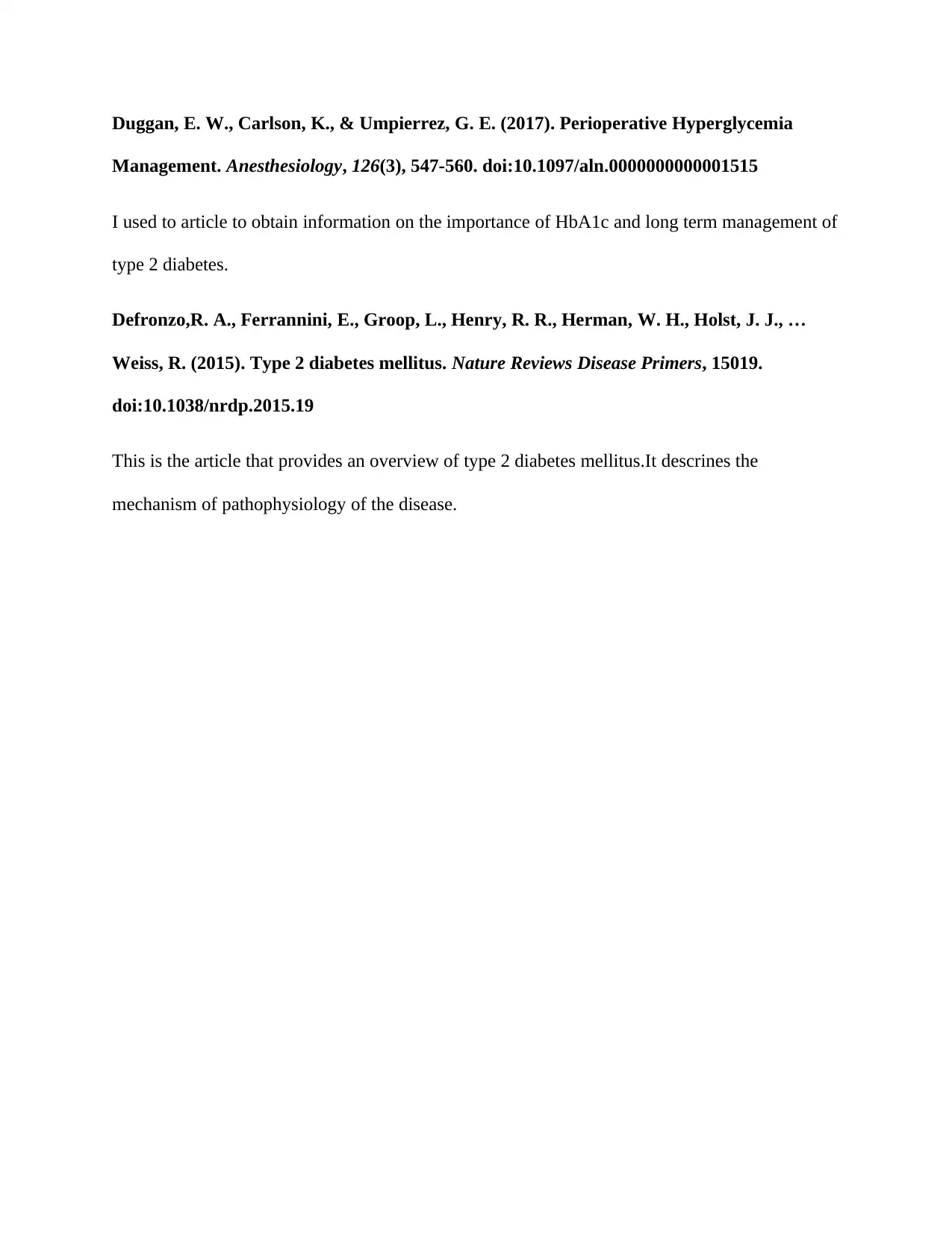Australian Catholic University BIOL122 Assignment 2: Diabetes Solution
VerifiedAdded on 2023/01/18
|4
|796
|49
Practical Assignment
AI Summary
This assignment solution addresses the pathophysiology and management of type 2 diabetes mellitus, focusing on a specific 'person/client' scenario. It begins by explaining how beta cells in the pancreas fail to produce sufficient insulin in response to hyperglycemia and how insulin resistance develops, leading to difficulties in blood glucose control. The solution then details the complications of hyperglycemia, including neuropathy and myocardial infarction, elaborating on the mechanisms by which high glucose levels damage nerves and affect heart function. The primary pharmacological intervention, metformin, is discussed, emphasizing its mechanism of action through the activation of AMP-activated protein kinase to stimulate cellular metabolism. The solution also explores the relationship between adiposity and type 2 diabetes, citing studies that highlight the role of visceral fat in increasing insulin resistance. Finally, it underscores the importance of HbA1c measurement in monitoring and managing the disease, explaining how this metric reflects average blood glucose levels and helps assess treatment effectiveness. The assignment concludes with a bibliography of relevant articles used to support the findings.
1 out of 4











![[object Object]](/_next/static/media/star-bottom.7253800d.svg)